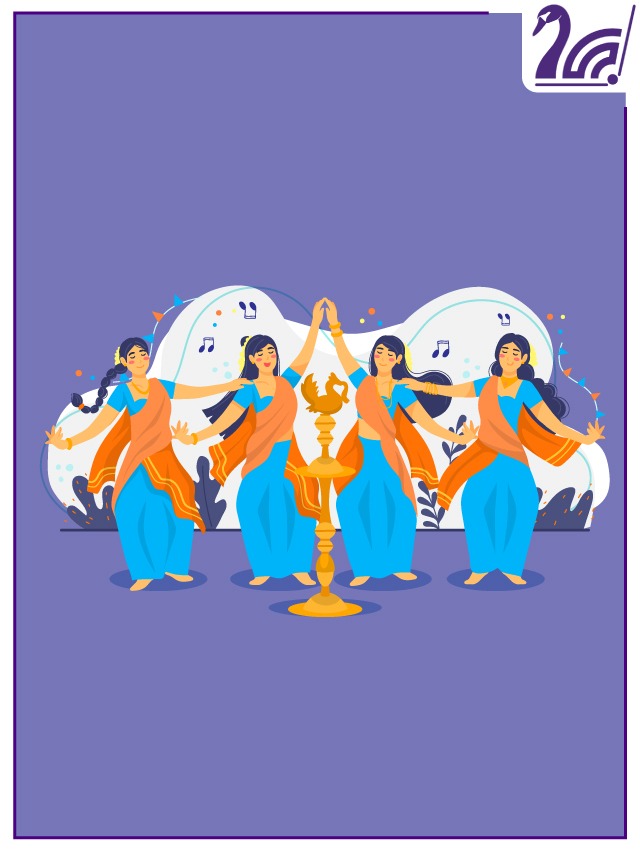Introduction
Onam, the vibrant and joyous festival of Kerala, India, is a celebration of culture, tradition, and unity. This ten day harvest festival brings together people from all walks of life to participate in a range of activities, from traditional dances and elaborate feasts to spectacular boat races and flower arrangements. Join me as we delve into the rich tapestry of Onam and explore the significance and customs that make this festival truly unique.

The Legend of Onam:
To truly appreciate the essence of Onam, we must first unravel the mythological story behind it. The festival commemorates the homecoming of the legendary King Mahabali, a just and benevolent ruler who once ruled Kerala. According to the Hindu myth, Lord Vishnu took the form of Vamana, a dwarf Brahmin, to test the king’s humility. Despite Mahabali’s vast riches and power, he was known for his humility and generosity. Impressed by his virtues, Lord Vishnu granted Mahabali the boon to visit his kingdom and his people once a year during Onam. This story forms the core of the festival and represents the spirit of togetherness and generosity.

Onam Preparations:
Months before Onam arrives, the people of Kerala begin their preparations. Homes are cleaned, and elaborate floral designs called “Pookalams” are made at the entrance to welcome King Mahabali. People adorn traditional attire, with women wearing colorful “Kasavu” sarees and men donning “Mundu” or “Kasavu” dhotis.

Onam Sadya – The Grand Feast:
The highlight of Onam is undoubtedly the sumptuous and elaborate feast known as the “Onam Sadya.” Served on banana leaves, the Sadya comprises a plethora of vegetarian dishes, including traditional favorites like Avial, Thoran, Olan, and Parippu Curry, among others. The feast is incomplete without the mouth-watering Payasam, a sweet dessert made with rice, jaggery, and milk. The Sadya is a testimony to Kerala’s culinary excellence and exemplifies the spirit of sharing and unity.

Onam Vallamkali – The Snake Boat Race:
A breathtaking spectacle during Onam is the Vallamkali or Snake Boat Race. Teams of oarsmen row gigantic, snake-shaped boats to the rhythm of traditional songs and drums, captivating spectators with their synchronized movements. The Aranmula Boat Race and the Nehru Trophy Boat Race are among the most famous and competitive events during the festival

Onakkodi – New Attire and Gifts:
Onam is a time for new beginnings, and it is customary to buy new clothes and exchange gifts with loved ones. This tradition, known as “Onakkodi,” spreads joy and strengthens the bonds of friendship and family.

Pulikali – The Tiger Play:
Pulikali, a unique folk art form, adds a playful and colorful touch to the Onam celebrations. Participants paint themselves as tigers and hunters and dance through the streets, creating an entertaining spectacle for all.

How Onam celebrated Outside of India or Kerala
Onam is a popular and vibrant festival celebrated primarily in the Indian state of Kerala. However, due to the significant presence of the Malayali (people from Kerala) diaspora all over the world, Onam is also celebrated outside of Kerala, especially in regions with a sizable Malayali community

Here’s how Onam is celebrated outside of Kerala:
Malayali communities in various cities or regions outside of Kerala come together to celebrate Onam.Clean and decorate homes to make festival ready. Make flower rangoli (pookkalam) on floors, which is considered a symbol of the harvest. Embrace the vibrant spirit of Onam by using enchanting flowers like Chethi, Chemparathy, Shankupushpam, Marigold, or Chrysanthemums to create stunning pookkalam designs adorning the floors.
People often dress up in traditional Kerala attire, like the white and gold Mundu (dhoti) for men and the Kasavu saree with gold border for women.
A grand feast known as Onam Sadya is prepared and served on a banana leaf to add flavor to the celebration. The family sits in a row on the floor and enjoy the food.
Onam celebrations outside Kerala often include cultural events, including traditional music and dance performances that showcase Kerala’s rich cultural heritage.
Like in Kerala, people exchange greetings along with a personal note wishing Happy Onam to express goodwill and strengthen social bonds.
Conclusion:
Onam is more than just a festival; it is a celebration of the spirit of Kerala and its people. Through vibrant festivities, rich traditions, and heartwarming customs, Onam brings people together and fosters a sense of unity and harmony.
As we join the jubilant crowds and partake in the grand festivities, we are reminded of the cultural diversity and inclusivity that make India truly incredible. Let us embrace the joy of Onam and cherish the values it embodies – love, respect, and togetherness.
Happy Onam!
